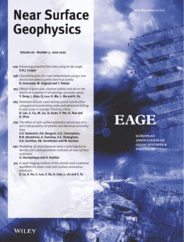
Full text loading...
 , Jiazhong Qian1
, Jiazhong Qian1 , Qiankun Luo1
, Qiankun Luo1 , Haichun Ma1
, Haichun Ma1 , Lei Ma1
, Lei Ma1 , Kaijian Xu1
, Kaijian Xu1
Researchers around the world have carried out numerous studies on the electrical response of oil‐contaminated silica sands. However, few studies consider the oil contamination in carbonate sands that exhibit quite different characteristics to silica sands. The purpose of this work is to study the influence of grain size (0.5–1.0, 1–3 and 3–5 mm), solution salinity (100, 10 and 1 Ω·m) and pH (4.58, 6.5 and 9.25) on the resistivity and saturation exponent of oil‐bearing carbonate sands. Experimental columns were packed with crushed limestone grains, solution and oil. Electrical resistivity measurements were subsequently performed on the packed columns. Grain size exhibits a complex effect on the electrical response of partially saturated limestone grains. Resistivity decreases slightly with increasing grain size when water saturation is greater than 0.4, while it shows an inconsistent trend when water saturation is lower than 0.4. The resulting saturation exponent n decreases slightly when grain size increases from 0.5–1 mm to 1–3 mm, while it shows a positive change in n values for grain size of 3–5 mm. Changes in solution salinity significantly influence the resistivity and saturation exponent of limestone grains, with higher solution salinity resulting in lower resistivity and higher saturation exponent. However, with solution pH increasing from 4.58 to 9.25, it shows very limited effect on the resistivity and saturation exponent of limestone grains. This can be attributed to the strong buffering ability of limestone. Effects of grain size, solution salinity and pH on the resistivity and saturation exponent of oil‐bearing carbonate sands were investigated. Resistivity is found to show a decreasing trend with increasing grain size from 0.5–1 mm to 3–5 mm above a certain saturation (e.g. Sw > 0.4), while it shows a rapid increase below a certain saturation (e.g., Sw0.4) for a larger grain size of 3–5 mm. Resistivity decreases and the saturation exponent increases with the increase of solution salinity for oil‐bearing carbonate sands. Resistivity and saturation exponent do not vary significantly with solution pH ranging from 4.58 to 9.25 for oil‐bearing carbonate sands.

Article metrics loading...

Full text loading...
References


Data & Media loading...

